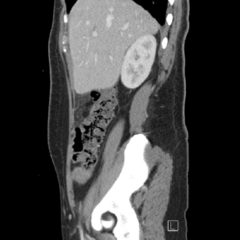Eclampsia
ABSTRACT:
Audience:
Emergency medicine residents and medical students on emergency medicine rotations.
Introduction:
Eclampsia is an uncommon but important life-threatening obstetrical emergency, complicating 1.5-10 deliveries per 10,000 pregnancies in resource-rich countries.1 If not recognized and treated promptly, there is risk of significant morbidity or death to both mother and baby. Clinically, eclampsia is defined by new-onset seizures or coma in women with preeclampsia.2 Preeclampsia is defined by maternal hypertension after 20 weeks gestation with or without signs of end organ dysfunction, and, like eclampsia, can develop in the postpartum period.1 Eclampsia manifests as new onset generalized tonic-clonic seizures. Eclamptic seizures are usually preceded by neurologic symptoms such as severe or atypical headache, visual disturbances, and non-neurologic symptoms such as severe abdominal pain or proteinuria.1Emergent treatment involves prompt administration of (intravenous) IV magnesium sulfate.2,3,4 Adjuncts include securing the airway if necessary and administration of IV antihypertensive medications. Like preeclampsia, definitive management is by prompt delivery of the fetus if the mother is still pregnant.1 If untreated, maternal mortality is as high as 14%.1 Women who develop eclampsia are at increased risk of obstetric complications in subsequent pregnancies and at higher risk for cardiovascular disease and metabolic disease later in life.
Educational Objectives:
At the end of this oral boards session, examinees will: 1) Demonstrate ability to obtain a complete medical history including a detailed obstetric history. 2) Demonstrate the ability to perform a detailed physical examination in a postpartum female patient who presents with a seizure. 3) Investigate the broad differential diagnoses which include electrolyte imbalances, brain tumor, meningitis or encephalitis, hemolysis, elevated liver enzymes, low platelets (HELLP) syndrome and eclampsia. 4) List the appropriate laboratory and imaging studies to differentiate eclampsia from other diagnoses (complete blood count, comprehensive metabolic panel, magnesium level, pregnancy testing, urinalysis, and computed tomography [CT] scan of the head). 5) Identify a postpartum eclampsia patient and manage appropriately (administer IV magnesium therapy, administer IV antihypertensive therapy, emergent consultation with an obstetrician). 6) Provide appropriate disposition to the intensive care unit after consulting with an obstetrician.
Educational Methods:
This was envisioned as an oral board testing case due to the multiple aspects which require emergency care. Residents are expected to assess the seriousness of the patient’s condition, elicit critical details from her recent medical history, and synthesize that data in order to treat a medically complex patient. Oral board testing is able to incorporate each of these aspects together and provide the resident with a dynamic learning environment.
Oral board testing is a way to assess the resident’s ability to rapidly obtain and interpret multiple sources of information simultaneously. By utilizing a case that requires pharmaceutical therapy, the clinical competency committee is able to obtain additional milestones which are sometimes difficult to test in the emergency department itself.
Learners were assessed using online evaluation tools available, ie, Google forms. Critical actions were subsequently tied to Emergency Medicine Milestones and the results were compiled and used for resident evaluations and clinical competency. Residents were given verbal feedback immediately after the examination, and they were provided with the scores of their online evaluation after all results were compiled.
Research Methods:
Learners and instructors provided written feedback after the case was administered to assess for strengths and weaknesses of the case, and modifications were then made to better address concerns. Learners answered written multiple-choice questions on high-level concepts, ie, critical actions, at least one month after this exam was completed.
Results:
Learners found this a challenging, but enjoyable, way to refresh their knowledge and skills regarding preeclampsia, and this was a highly rated part of their mock oral board examination. Overall, residents rated the session 4.3 (1-5 Likert scale, 5 being Excellent) after the oral board review session was completed. Comments from residents included “haven’t seen post-partum preeclampsia in residency” and “challenging to remember magnesium dosing.”
Discussion:
Residents and medical students were evaluated using this method and both enjoyed the activity as a novel way to study as well as exercise their medical knowledge. The content was both highly relevant to the practice of emergency medicine and the format was an effective way to deliver the information to the learners. The case is a good model to evaluate for the high stakes testing of both the written and oral board examinations, but also a way to assess residents’ abilities to treat preeclamptic and eclamptic patients in the emergency department.
Topics:
Eclampsia, preeclampsia, seizures, end-organ damage, hypertensive emergency, altered mental status, neurologic emergency, obstetric emergency.

